If you’re looking for a trek that combines stunning mountain views, rich culture, and unique experiences, then the Upper Mustang Trek in May is the perfect choice. As you embark on this journey through the heart of the Himalayas, you’ll find yourself surrounded by snow-capped peaks, vibrant rhododendron forests, and traditional Mustang villages that are sure to leave you awestruck. But that’s not all! With the arrival of spring in May, the Upper Mustang region comes alive with a riot of colors, from the blooming flowers to the vividly painted Chortens and prayer flags. And let’s not forget the thrill of crossing the iconic Kali Gandaki Gorge or exploring the ancient caves and monasteries that dot the landscape. So pack your bags, lace up your boots, and get ready for an unforgettable adventure that will leave you breathless.
Location and Altitude
The Upper Mustang region is located in the north-central part of Nepal, bordering Tibet on the north. The altitude of the Upper Mustang region varies from around 2,800 meters (9,200 feet) to over 4,000 meters (13,000 feet) above sea level.

The capital of Upper Mustang, Lo Manthang, sits at an altitude of 3,800 meters (12,467 feet), while some of the high mountain passes cross above 4,000 meters.
Highlights of the Upper Mustang Trek in May
The Upper Mustang region of Nepal is a hidden gem that is waiting to be discovered by adventurous travelers. May is the perfect time to explore this region, as the weather is pleasant, and there are many highlights to experience. Let’s discuss the highlights of the Upper Mustang Trek in May.
Beautiful Scenery:
The Upper Mustang region offers breathtaking scenery of the Himalayan range, including Dhaulagiri and Annapurna. The trek takes you through barren landscapes, deep gorges, and towering cliffs, giving you a unique perspective of the region.
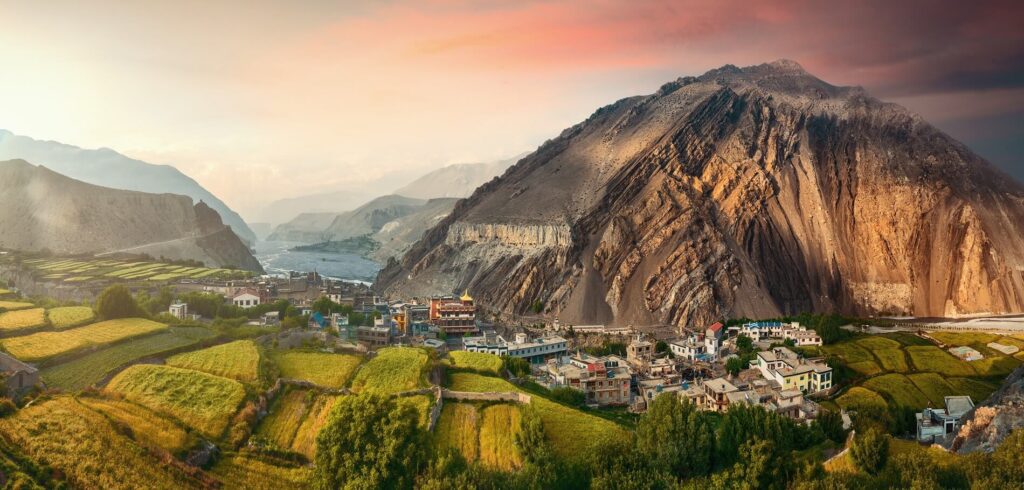
The Mustang Valley is also known for its beautiful rock formations that are unlike any other region in Nepal.
Cultural Experience:
The Upper Mustang region is home to the Mustang people, who have unique cultures and traditions. The region was once a part of the ancient Kingdom of Lo, and the people have preserved their culture and traditions over the years. The trek takes you through ancient monasteries, Chortens, and caves that hold religious significance. You will also get to interact with the local people, who are welcoming and friendly.
Natural Hot Springs:
During the Upper Mustang Trek, you will get the opportunity to relax in natural hot springs. After a long day of trekking, the hot springs offer a perfect way to unwind and soothe your muscles.
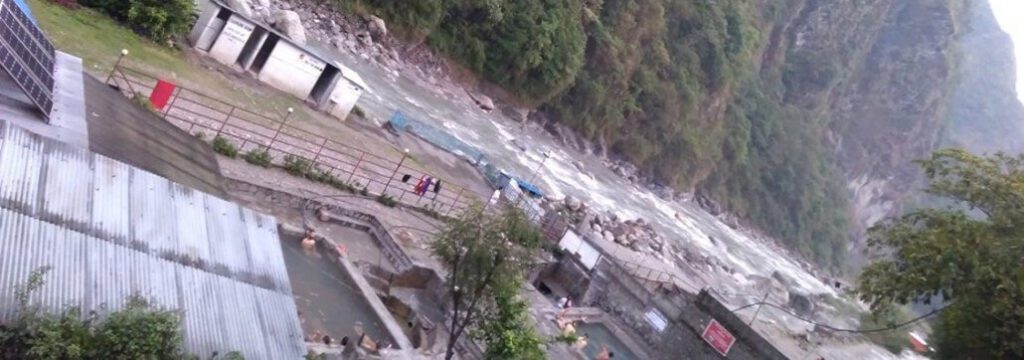
The hot springs are located near Tatopani and Chusang, and they are a great way to experience the natural beauty of the region.
Local Cuisine:
The Upper Mustang region is known for its unique cuisine, which is a mix of Tibetan and Nepalese flavors. The local cuisine includes dishes like Thukpa (noodle soup), momos (steamed dumplings), and Champa (roasted barley flour).

You will get to taste the local cuisine during your trek, and it’s a great way to experience the local culture.
Unique Accommodations:
The Upper Mustang region has unique accommodations that are unlike any other region in Nepal. The trek takes you through small villages and settlements where you will get to stay in traditional guesthouses called teahouses. The teahouses are basic but comfortable, and they offer an authentic experience of the local lifestyle.
Tiji Festival:
If you are lucky, you might get to witness the Tiji Festival, a three-day-long celebration that takes place in May. The festival is a colorful display of cultural performances, traditional costumes, and rituals that depict the victory of good over evil.

The festival is celebrated in Lo Manthang, and it is a unique opportunity to experience the local culture and traditions.
Temperature and Weather Conditions of the Upper Mustang in May
In May, the Upper Mustang region experiences a transitional period between spring and summer. The weather is mostly dry and sunny, with occasional rainfall in the lower elevations. The temperature during the day ranges from 10°C to 25°C, while at night, it drops to around -6°C to 2°C.
Knowing that the weather in the Upper Mustang region can be unpredictable with sudden shifts being possible, it is essential to bring along warm clothing, waterproof coats, and sturdy hiking shoes to prepare for any unforeseen weather conditions.
Kathmandu to Upper Mustang Trek in May
To reach Upper Mustang from Kathmandu, you must take flights and drive. Here are the typical steps to follow:
By Flight
To reach Upper Mustang, you can start by taking a flight from Kathmandu to Pokhara which typically takes around 30 minutes. From there, you have two options: either take another flight to Jomsom or drive to Nayapul and begin trekking to Jomsom.
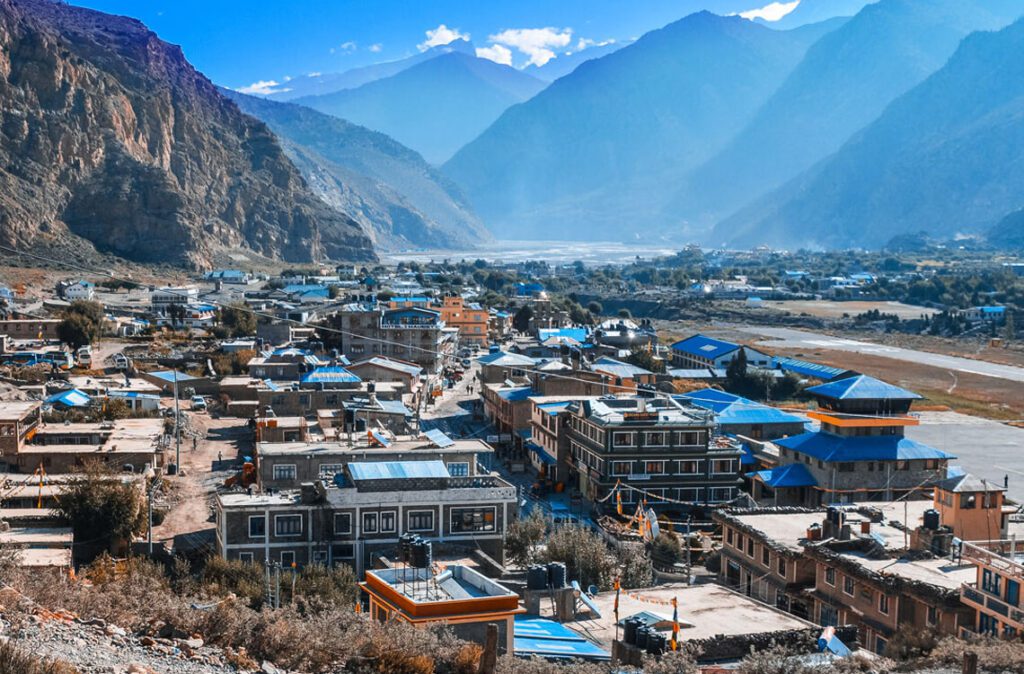
The drive takes approximately 7-8 hours whereas the flight is much shorter around 20-25 minutes.
Private Jeep
You can hire a private jeep from Kathmandu to Pokhara and then continue to Jomsom. This can be a faster and more comfortable option than a public bus, but it can be more expensive. The travel time is around 10-12 hours from Kathmandu to Pokhara and another 7-8 hours from Pokhara to Jomsom.
Public Bus
You can take a public bus from Kathmandu to Pokhara which usually takes around 7-8 hours. From Pokhara, you can take another bus to Jomsom which takes around 10-12 hours. However, public buses can be crowded and uncomfortable and the roads can be bumpy and unpaved in some parts.
Motorbike
You can also rent a motorbike from Kathmandu and ride to Pokhara which takes around 7-8 hours.

From Pokhara, you can continue to Jomsom on your motorbike but it can be challenging due to rough roads and difficult terrain. It is essential to have prior experience in riding in the mountains and make sure to carry all necessary safety gear.
Required Permits for the Upper Mustang Trek in May
The Upper Mustang region of Nepal is a restricted area and special permits are required to trek there. Here are the permits you’ll need for the Upper Mustang trek:
- Annapurna Conservation Area Permit (ACAP): This permit is required for all treks in the Annapurna region, including the Upper Mustang trek. You can obtain it in Kathmandu or Pokhara, or from the checkpoint at the start of the trek.
- Restricted Area Permit (RAP): This permit is required specifically for the Upper Mustang trek, as it is a restricted area. You can only obtain it through a registered trekking agency in Nepal, and you must trek with a registered guide.
- TIMS Card: The Trekkers’ Information Management System (TIMS) card is also required for the Upper Mustang trek. You can obtain it in Kathmandu or Pokhara.
It’s important to note that the permit requirements and fees may change, so it’s best to check with a reliable trekking agency or the Nepal Tourism Board for the latest information.
Difficulty Level of the Upper Mustang Trek in May
The difficulty level of the Upper Mustang trek in May can vary depending on a number of factors, such as your fitness level, experience with trekking, altitude acclimatization, and weather conditions.

Generally, the Upper Mustang trek is considered to be a moderate to challenging trek. The trail can be steep and rocky at times, and the altitude can be a challenge for some trekkers. However, the trail is well-marked and the scenery is spectacular with views of snow-capped mountains, ancient Buddhist monasteries, and traditional villages.
In May, the weather in Upper Mustang can be dry and sunny but temperatures can still be cold, especially at night. It’s important to pack warm clothing and a good sleeping bag to stay comfortable.
Flora and Fauna
The Upper Mustang Trek is a beautiful trekking trail in Nepal that offers a unique glimpse into the region’s culture, history, and nature. Here are some flora and fauna that can be spotted during the Upper Mustang Trek:
Flora
During May, the region boasts a unique and diverse range of flora and fauna with various species of plants and flowers found throughout the trek. Here are some of the flora that can be spotted during the Upper Mustang trek in May:
Rhododendron:
Rhododendrons are Nepal’s national flower and they can be found in abundance during the trek.

In May, the rhododendrons bloom in vibrant shades of pink, red, and white making for a beautiful sight.
Blue poppy:
The blue poppy is a rare and exotic flower that can be found in the high-altitude regions of the Upper Mustang trek. May is the perfect time to spot these beautiful flowers in full bloom.
Primrose:
Primrose is a flowering plant that is commonly found in the Himalayan region of Nepal. They come in various shades of pink, yellow, and white, and they bloom during the spring and summer months.
Edelweiss:
Edelweiss is a rare and delicate flower that can be found in the high-altitude regions of the Upper Mustang trek. These beautiful white flowers bloom during May and June.
You may also like: Upper Mustang Trek in April: Weather, Difficulty Travel Tips, and More
Lady Slipper Orchid:
Lady Slipper Orchid is a rare and exotic orchid that can be found in the high-altitude regions of Nepal. They have unique and intricate flowers with slipper-shaped lips, and they bloom during May and June.
Potentilla Nepalensis:
Potentilla Nepalensis is a species of Potentilla that is found in the Upper Mustang region of Nepal. They have beautiful pink flowers that bloom during the summer months including May.
FAUNA found on Upper Mustang Trek in May
The Upper Mustang region is rich in biodiversity and offers a chance to spot various species of animals. Here are some of the animals that you might spot during the Upper Mustang trek in May:
Blue Sheep:
Blue sheep is a wild mountain sheep found in the Himalayas. They are known for their agility and are excellent climbers making them a common sight in the steep mountainous terrain of the Upper Mustang region.
Snow Leopard:
Snow leopards are elusive and rare animals found in the Himalayas. While it is not easy to spot them, the Upper Mustang region is known to be one of the best places to see them.
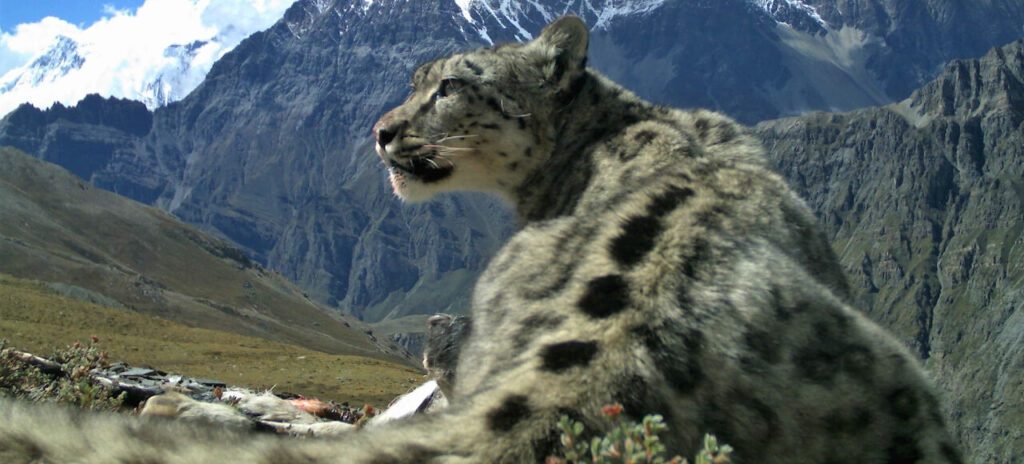
They are mostly active during the early morning and late evening, so keeping an eye out during these times increases your chances of spotting one.
Tibetan Wolf:
The Tibetan wolf is a rare and endangered species found in the Himalayas. They are known to roam in packs and are generally found at higher elevations. The Upper Mustang trek route offers a chance to spot these majestic creatures in their natural habitat.
Popular: Upper Mustang Trek in March: Travel Tips, Weather, and More
Himalayan Griffon:
The Himalayan Griffon is a large vulture found in the Himalayas. They are known for their distinctive feathered head and neck and are a common sight during the trek.
Himalayan Marmot:
Himalayan marmots are large, ground-dwelling squirrels found in the Himalayas. They are known for their whistling alarm calls and can be spotted sunbathing near their burrows.
Yak:
Yaks are also commonly spotted during the Upper Mustang trek in May. Yaks are large, shaggy-haired mammals that are well-adapted to living in high-altitude environments. They are domesticated animals that are used by the local communities for transportation and as a source of milk, meat, and wool.
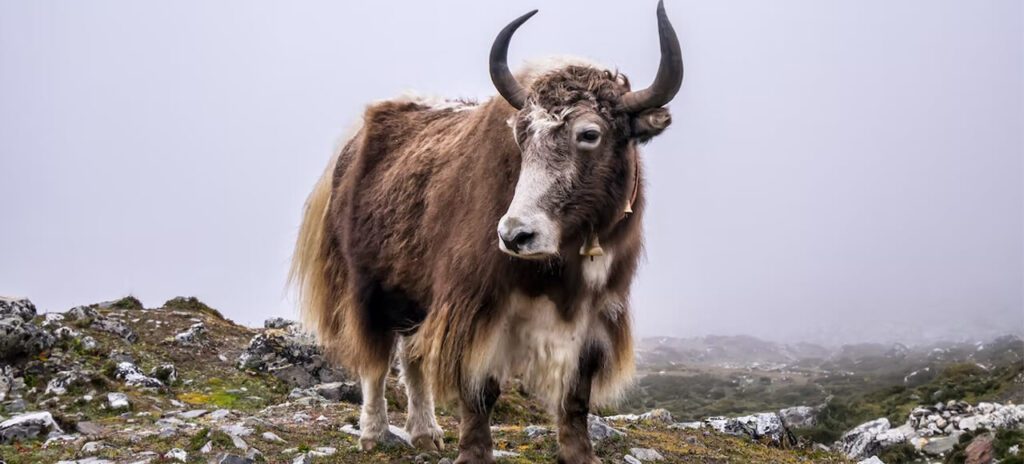
During the trek, you may come across herds of yaks grazing in the pastures, and you may also encounter yak caravans carrying supplies to remote villages.
Tips for the Upper Mustang Trek in May
Here are some of the side treks that can be enjoyed during the Upper Mustang Trek:
Lo Gekar Monastery Trek:
The Lo Gekar Monastery is located in the Ghami Village of Upper Mustang, and it is one of the oldest monasteries in Nepal. It is said to have been built in the 8th century by Guru Rinpoche, the founder of Tibetan Buddhism. The trek to the monastery takes you through a beautiful landscape of barren hills, deep canyons, and small villages.
Tiji Festival Trek:
The Tiji Festival is a three-day event that takes place in Lo Manthang, the capital of Upper Mustang, in late May or early June. It is a colorful and vibrant celebration of the victory of good over evil.
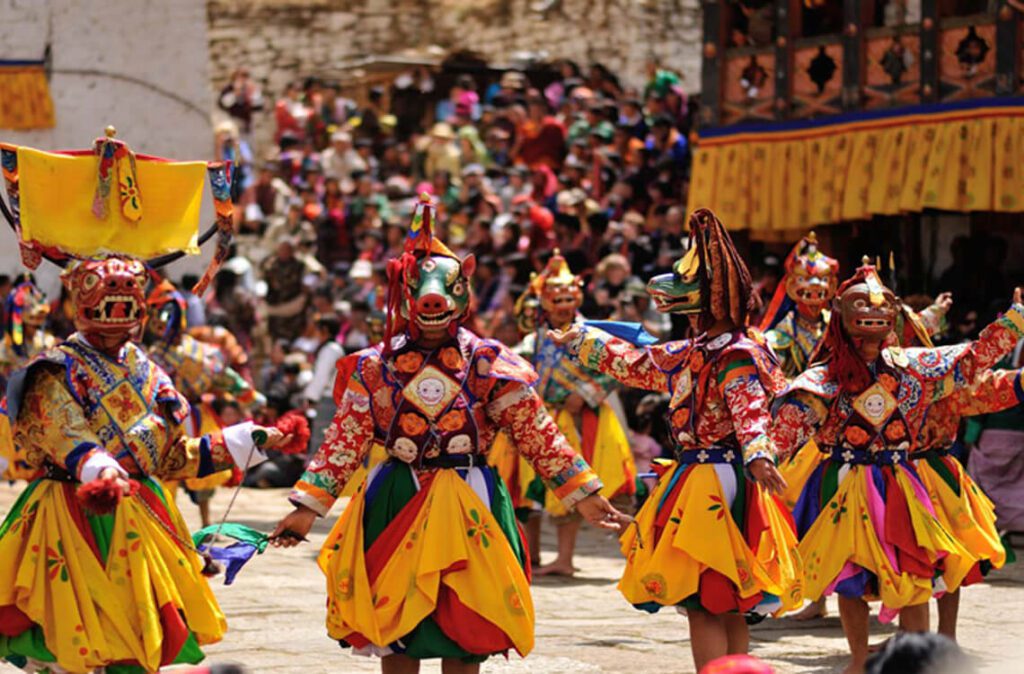
During the festival, masked dancers perform ancient rituals and dances, and people from all over Nepal and the world come to witness the event.
Chhoser Cave Trek:
The Chhoser Cave is located near the village of Chhoser in Upper Mustang, and it is one of the most interesting and unique attractions in the region. The cave is a series of interconnected tunnels and chambers that were carved out of the rock by hand over 2,000 years ago. The cave was used as a meditation retreat by Tibetan Buddhist monks, and it contains many ancient artifacts and murals.
Damodar Kund Trek:
Damodar Kund is a sacred lake located in the Upper Mustang region of Nepal, and it is a popular pilgrimage site for Hindus and Buddhists. The trek to the lake takes you through a beautiful landscape of barren hills, deep valleys, and small villages, and it offers stunning views of the surrounding mountains.
Muktinath Temple Trek:
The Muktinath Temple is a sacred site for both Hindus and Buddhists, and it is located in the Mustang region of Nepal. The temple is dedicated to Lord Vishnu, and it is believed that taking a bath in the nearby springs can cleanse your sins.
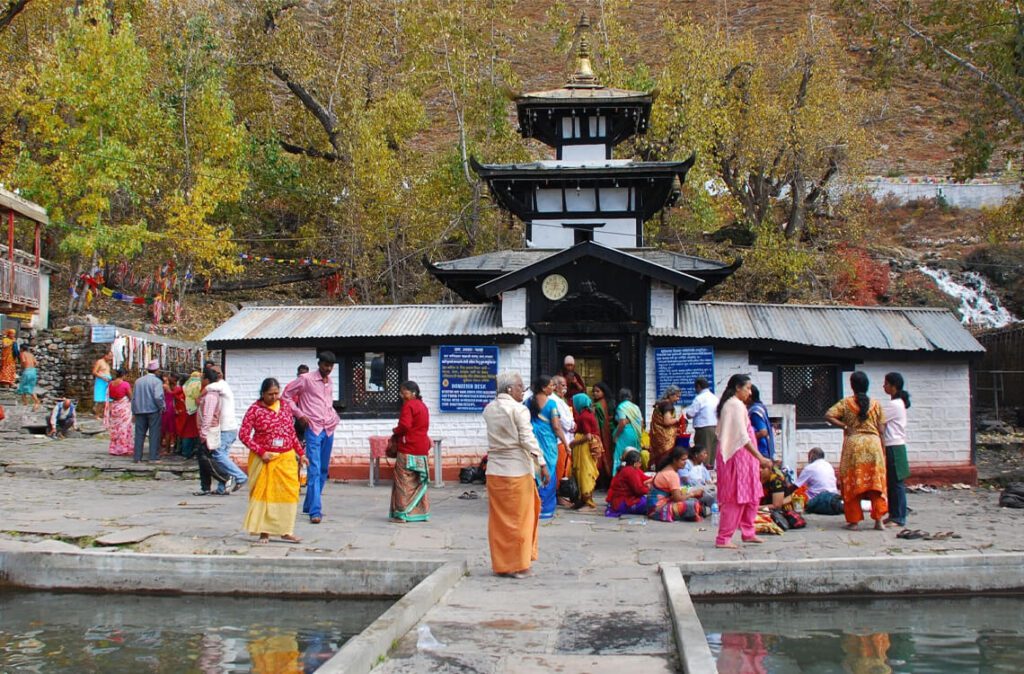
The trek to the temple takes you through a beautiful landscape of barren hills, deep canyons, and small villages.
Tips for the Upper Mustang Trek in May
May is a good time for trekking in Upper Mustang, but it can be quite challenging due to the hot and dry weather conditions. Here are some tips for the Upper Mustang trek in May:
Stay hydrated:
The weather in May can be quite hot and dry, so it’s essential to drink plenty of water to avoid dehydration. Carry a water bottle and refill it at the lodges along the trail.
Pack light:
The Upper Mustang trek is a challenging trek, and you’ll need to carry your backpack for several days. Pack only the essentials, such as warm clothes, comfortable hiking shoes, a rain jacket, and toiletries.
More: Upper Mustang Trek in February: Travel Tips, Weather, and More
Use sunscreen:
The sun can be intense during the day, especially at higher altitudes. Apply sunscreen with a high SPF to protect your skin from sunburn.
Hire a guide:
Hiring a guide is recommended for the Upper Mustang trek, especially if you’re not an experienced trekker. A guide can help you navigate the trail, communicate with the locals, and ensure your safety.
Be prepared for the unexpected:
Weather conditions can change quickly in the mountains, so it’s essential to be prepared for the unexpected. Carry a first-aid kit, extra food and water, and a charged mobile phone for emergencies.
Let our expert team at Asian Heritage Treks and Travel take care of everything — from guided tours to personalized packing tips and travel arrangements.
Plan My Mustang Trip







